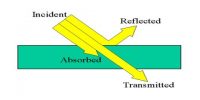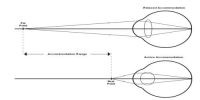From our daily experience, we see that the closer the object is to the eyes the clearer it is to see. But, there is a point after which it cannot be seen clearly. The nearest point at which eyes can see without any difficulty is called the distance of distinct vision. For any normal eye, this distance is nearly 25cm. So, the near point of a normal eye is 25 cm away from the eye. It is difficult for our eyes to see any object clearly that stays closer to this distance.
Again, the distance which is maximum from the eye to see an object is called the farthest distance of distinct vision. It is also called the far point of the eye. The far point of any normal eye is at infinity. This means that a normal eye can see up to a huge distance.
Persistence of vision: If any object is placed before our eyes an image of the object is formed in our retina. As a result of it, we see the object. For any reason, if the object is removed from our eyes, a sensation of that object stays in our brain for about 0.1 second. This period is called the persistence of vision.















